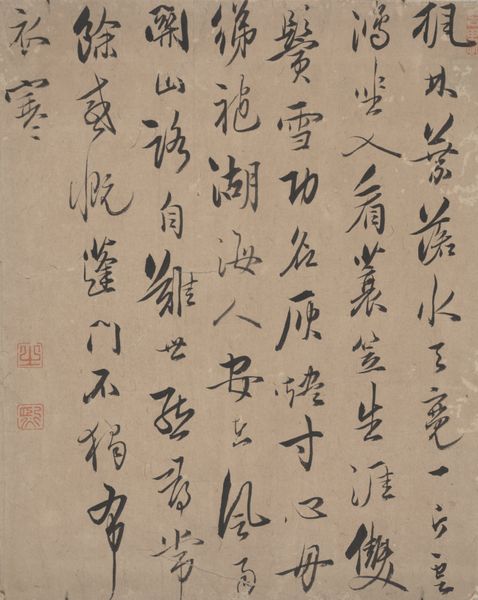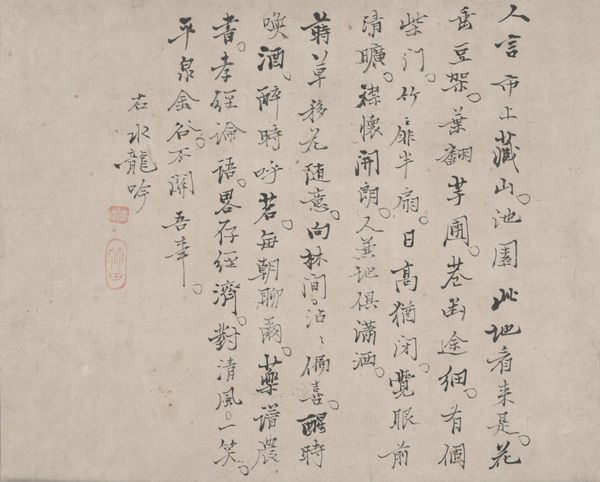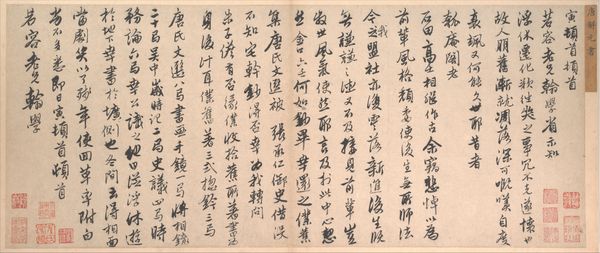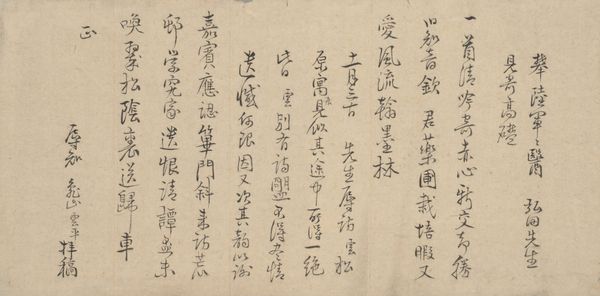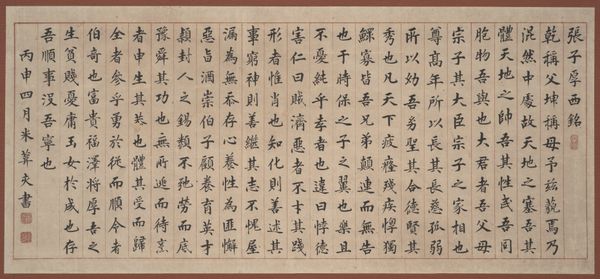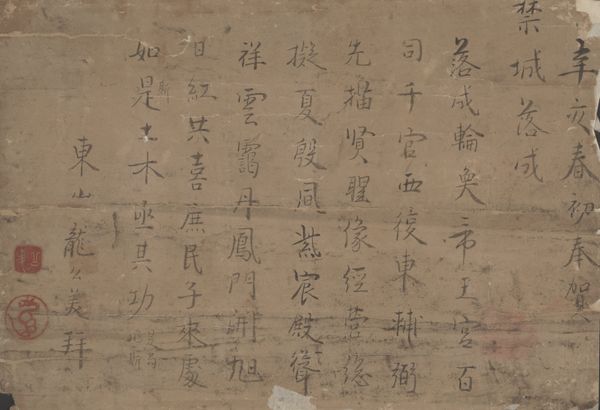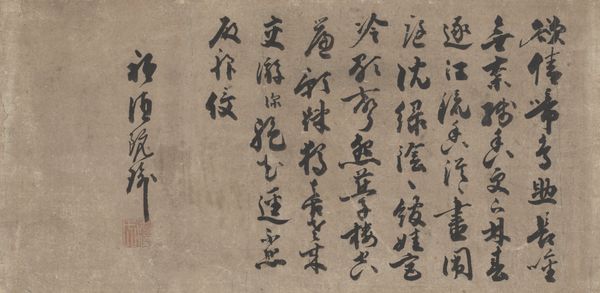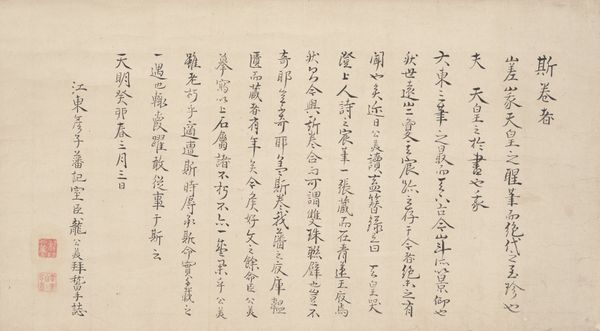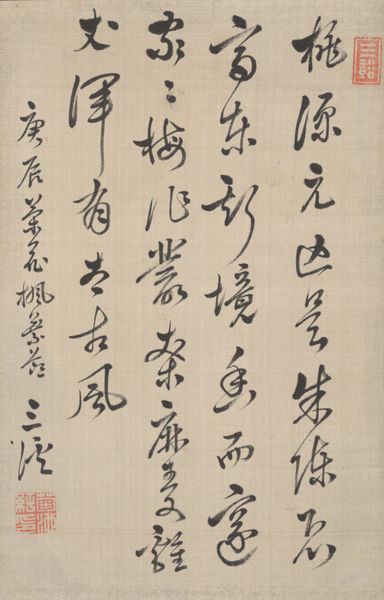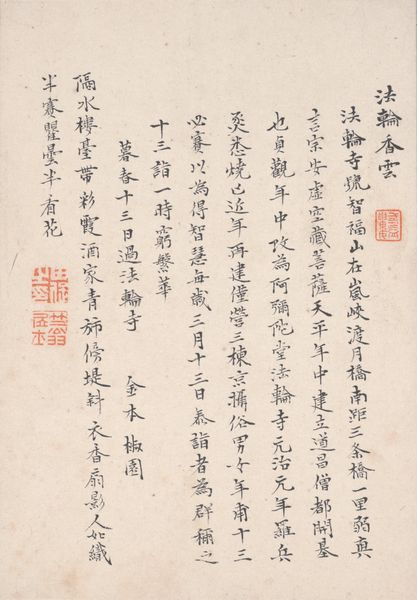
drawing, paper, ink
#
drawing
#
asian-art
#
paper
#
ink
#
abstraction
#
line
#
calligraphy
Dimensions: 10 1/16 × 12 3/4 in. (25.56 × 32.39 cm)
Copyright: Public Domain
Curator: Here we have "Calligraphy in Running Script" created around the mid-19th century, attributed to Murase Tōjō. It's ink on paper, a beautiful example of Asian calligraphy now housed at the Minneapolis Institute of Art. Editor: It's certainly striking. The ink flows and ebbs with such controlled dynamism, filling the page in what feels like a deeply personal language. Almost abstract, really, if you don't read it. Curator: Well, it's definitely meant to be read. Calligraphy in this period held tremendous cultural significance, not only as a form of communication but also as an art form demonstrating the calligrapher's education and aesthetic sensibilities. The skill in wielding the brush... it was deeply tied to one’s status. Editor: Exactly, look at the texture of the ink, the absorbency into the paper. Each stroke, thick or thin, deliberate or hurried, showcases the artist's technical prowess, the paper having its own social, and even industrial, background, too. What type of paper did they use? Curator: These papers were typically handmade and required immense labor. Their production was tied into complex trade networks. Now, Murase Tōjō, through his calligraphy, he's performing more than a skill, he's also asserting a persona of intellect and cultural sophistication, an essential tool for upward mobility, in the context of highly rigid class structures of 19th century Japan. Editor: So it's not just self-expression. The materials and the skills embody specific cultural and socio-economic implications that influence its meaning. The very act of creating the piece within this society places the art—the skill, and even the artist, in a historical narrative. It forces us to re-think of labor in artistic works! Curator: Indeed. And, in this case, a statement in line with the cultural elite of his day. Editor: I guess I initially just responded to the surface feeling of the thing—the raw, expressive energy of the lines—but it's really woven into a social fabric of production and consumption. Curator: And that's the beauty of approaching art from different angles; it brings it to life with nuance! Editor: It certainly gives a profound context to our interpretation of Asian art, one that's tied to societal frameworks.
Comments
No comments
Be the first to comment and join the conversation on the ultimate creative platform.

